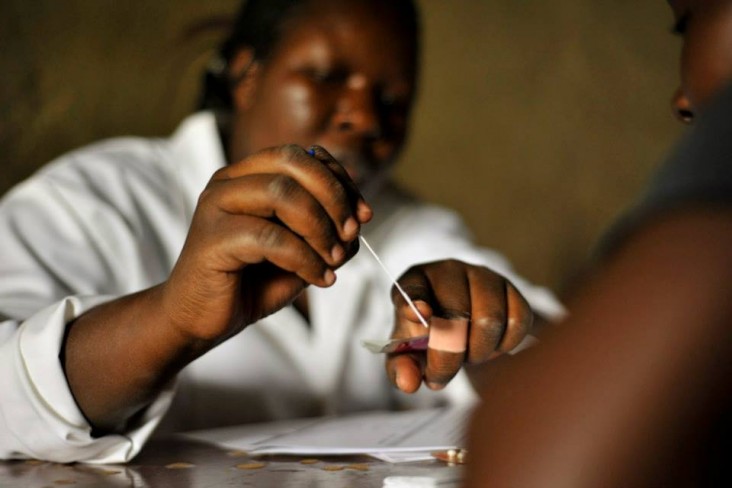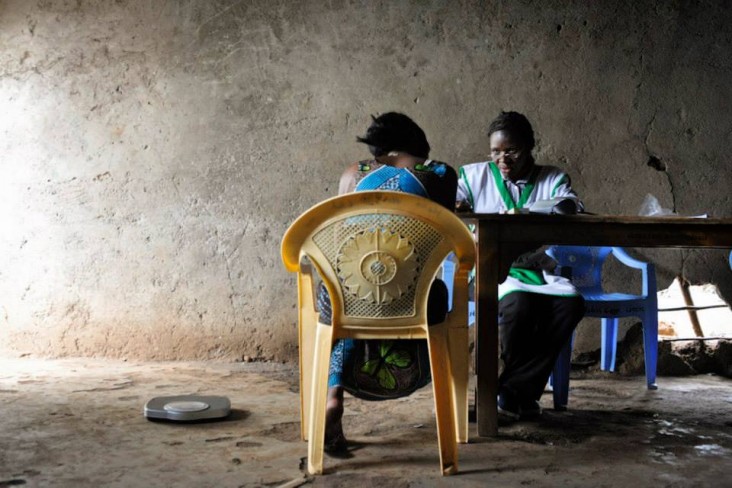- What We Do
- Agriculture and Food Security
- Democracy, Human Rights and Governance
- Economic Growth and Trade
- Education
- Ending Extreme Poverty
- Environment and Global Climate Change
- Gender Equality and Women's Empowerment
- Global Health
- Water and Sanitation
- Working in Crises and Conflict
- U.S. Global Development Lab

Although the health of women and girls has improved globally, gender inequality continues to have a serious negative impact on many health outcomes. Each year more than 289,000 women, 99 percent of them in developing countries, die from pregnancy- and childbirth-related complications. An additional 15 to 20 million women suffer debilitating consequences of pregnancy, and some 214 million women worldwide would like to avoid pregnancy but are not using a modern method of contraception.
Unequal gender norms also contribute to men’s and women’s vulnerability to HIV and prevent them from seeking HIV testing, counseling, and treatment, as well as disclosing their HIV status. Today, women and girls make up almost half of the infected population aged 15 to 49 worldwide; in sub-Saharan Africa, the rate is close to 60 percent.
USAID’s half a century of experience has shown that health programs that address gender barriers improve development outcomes overall. When women are educated and can earn and control income, infant mortality declines, child health and nutrition improve, population growth slows, economies expand, and cycles of poverty are broken. That’s why we’re supporting women around the world by:
- Providing voluntary family planning information, products, and services to support women’s and couples’ ability to make and act upon informed reproductive decisions about the timing and spacing of their pregnancies.
- Improving maternal and child health through key interventions such as iron supplementation, access to a skilled birth attendant and health facility, and prevention and treatment of obstetric and newborn complications.
- Ensuring HIV and AIDS prevention and treatment programs focus on women’s unique vulnerabilities to infection.
- Supporting critical health programs that address women’s needs, including reproductive health, nutrition, malaria, and pandemic disease programs.

The U.S. works with country governments to improve health outcomes, strengthen health systems, and deliver integrated services, with an emphasis on the health of women, newborns and children. In the 24 priority countries for ending preventable child and maternal death (EPCMD), USAID programs develop and evaluate interventions to promote more equitable gender norms, increase women’s agency, and improve access to health information and services.
Since 1990, the maternal mortality ratio has decreased by more than half in USAID’s priority countries, from 681 per 100,000 live births to 308 per 100,000 live births in 2013. In that same time, the percent of women using a modern method of contraception has increased from 12 percent in 1990 to 31 percent in 2013 in the countries with the largest USAID supported programs.
- The Gender Roles, Equality and Transformation (GREAT) Project aims to promote gender-equitable attitudes and behaviors among 10-19 year old adolescents and their communities, with the goal of reducing gender-based violence and improving sexual and reproductive health in post-conflict communities in Northern Uganda. Based on a qualitative study to understand how gender norms are learned, internalized and passed on, the GREAT Project includes intervention activities such as a radio serial drama to catalyze discussion in the community; a toolkit that includes tailored discussion guides, activity cards, a flipbook and games to help pre-existing groups of married and unmarried adolescents (e.g., sports groups) understand and challenge gender norms and increase understanding of sexual and reproductive health issues. The project also implements training for Village Health Workers to improve sexual and reproductive health services.
-
The DREAMS Initiative (Determined, Resilient, Empowered, AIDS-free, Mentored, and Safe) for Adolescent Girls and Young Women is a $210 million public-private partnership between PEPFAR, The Bill and Melinda Gates Foundation, and the Nike Foundation that seeks to reduce HIV incidence among adolescent girls and young women ages 10-24 by 25% across ten African countries: South Africa, Swaziland, Mozambique, Kenya, Tanzania, Uganda, Lesotho, Malawi, Zambia, and Zimbabwe. More information can be found here: http://www.pepfar.gov/partnerships/ppp/dreams/index.htm.
- In 2013, the USAID-funded Health Policy Project in Malawi launched a “Happy Midwives for Happy and Healthy Mothers” campaign to draw attention to the poor status and substandard working conditions of midwives and the impact on the provision of high-quality care. As a result of these advocacy efforts, the Ministry of Health changed the title of the Directorate of Nursing at the Ministry of Health, which is now designated as the Directorate of Nursing and Midwifery, thus highlighting the importance of midwives in Malawi’s health system
Resources:
- Women’s Lives and Challenges: Equality and Empowerment Since 2000 [PDF, 13MB].
- Read USAID’s plan to save 600,000 women by 2020 in the Acting on the Call Report.
- Learn more about International Day of Zero Tolerance to Female Genital Mutilation.
- Visit the Gender Equality and Women’s Empowerment section.
- Read the PEPFAR Fact Sheet: Addressing Gender and HIV/AIDS.
- Read the Updated PEPFAR Gender Strategy.
- Read the Maternal Health Vision for Action.







Comment
Make a general inquiry or suggest an improvement.